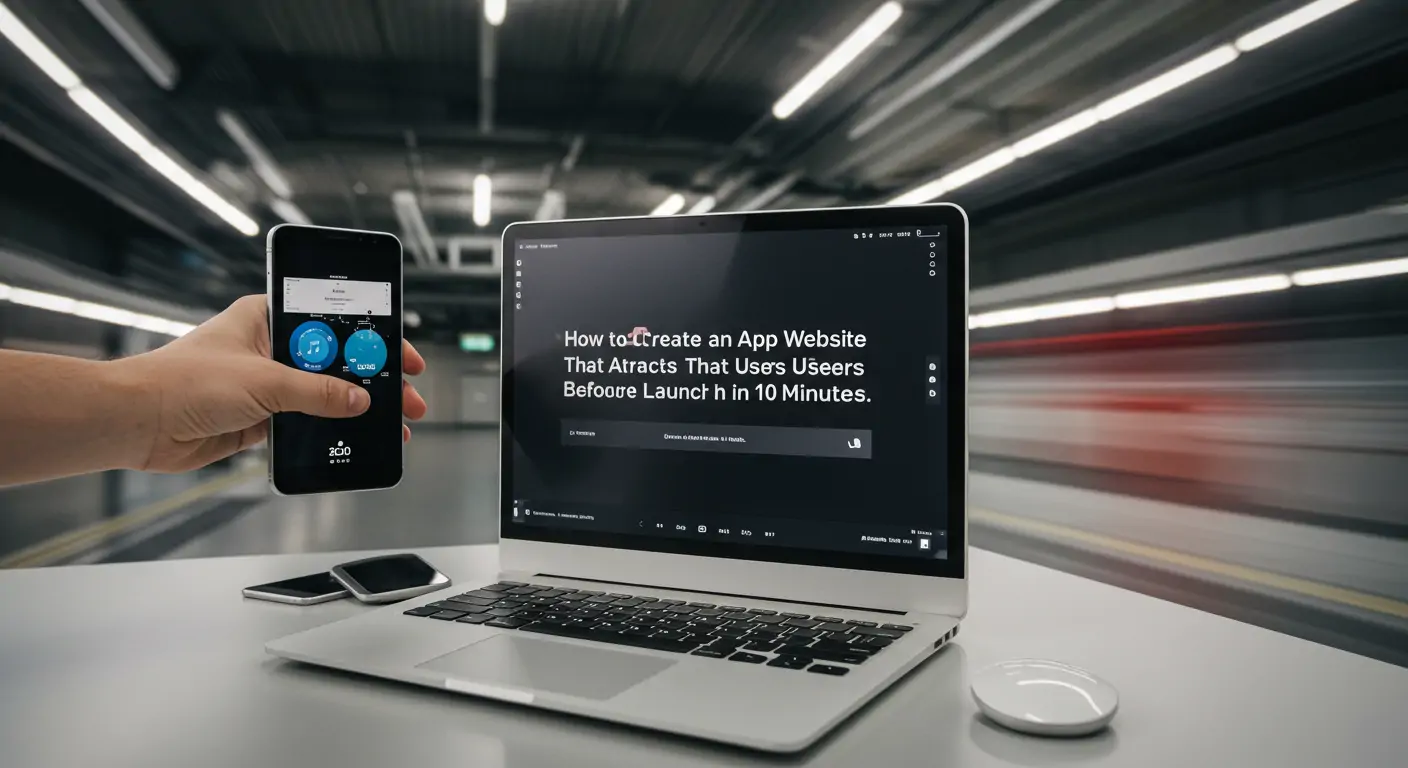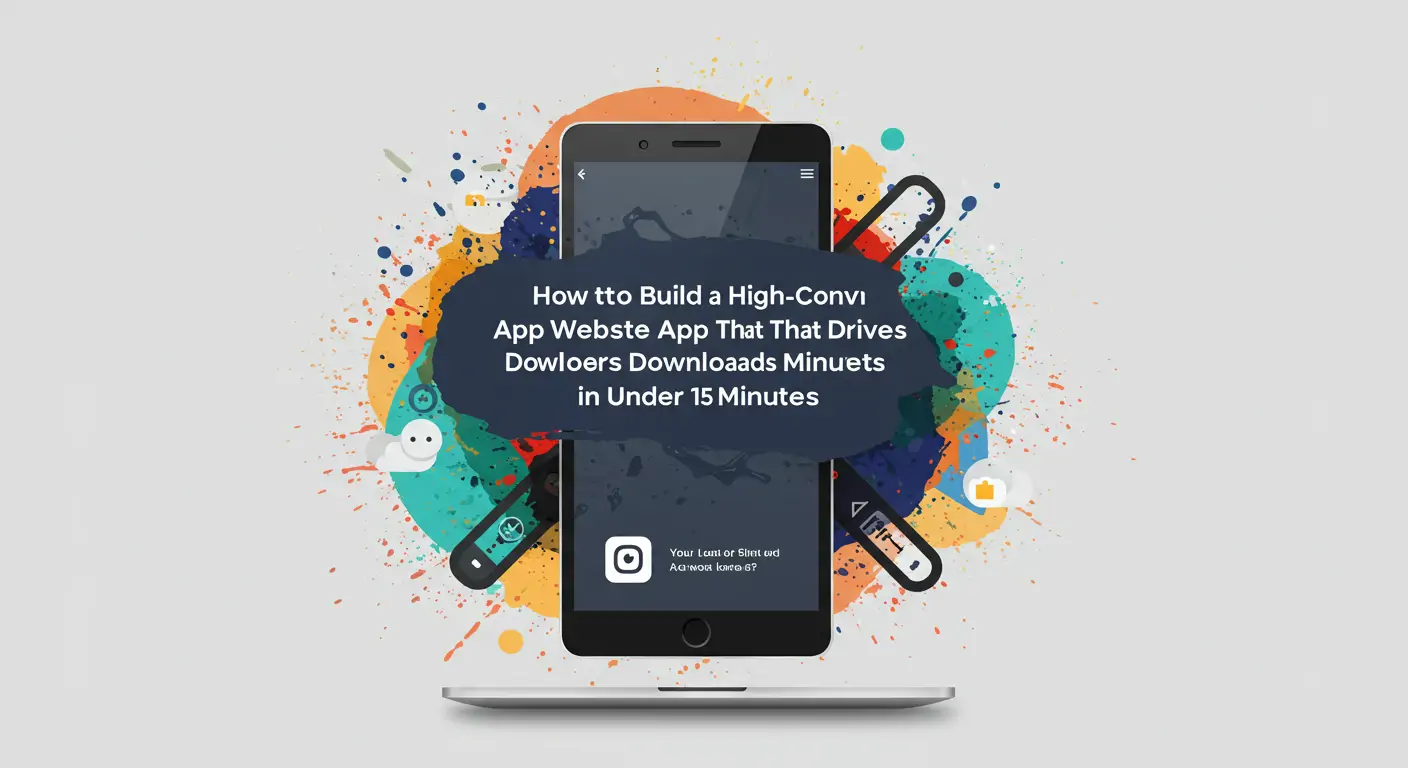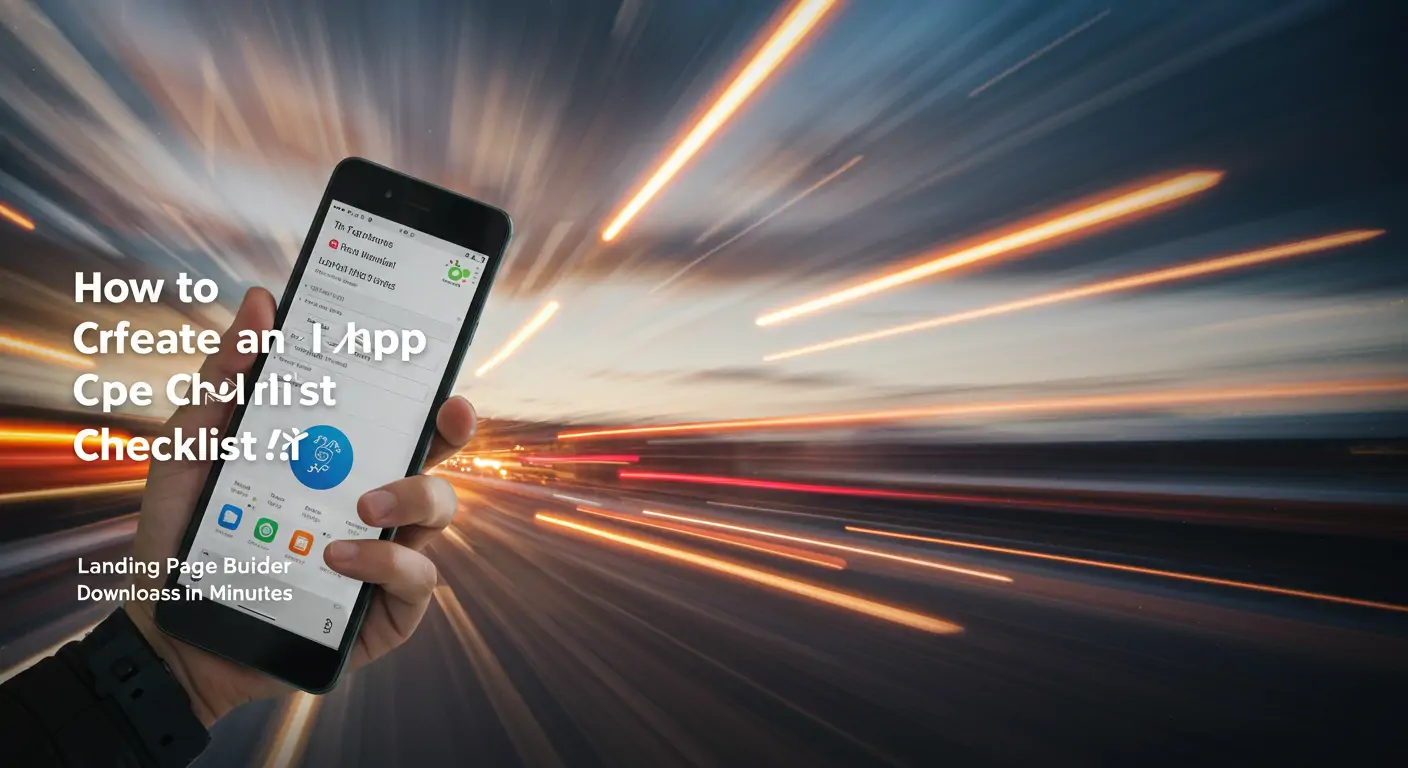Introduction: The Challenge
Developers often face the daunting task of marketing their apps with limited resources. According to recent statistics, 90% of apps fail to gain traction because they lack an effective online presence before launch. This article will teach you how to create an app landing page that attracts users in just 10 minutes. This is crucial for your app's success as a well-designed landing page can significantly increase user interest and engagement even before your app hits the market.
Why This Matters: The Data Behind It
Studies show that apps with pre-launch landing pages generate 40% more initial downloads. For example, the successful app 'Focusly' saw a 50% higher conversion rate with a targeted landing page. Not having a marketing presence can result in a 60% increase in acquisition costs. The potential ROI of a well-crafted landing page is substantial, often 5x or more.
The Problem: Why Most Developers Struggle
Challenge 1: Limited Time and Resources
Many developers struggle to find time to market their apps effectively. Common mistakes include focusing too much on development and neglecting marketing, using generic templates that don’t convert, and underestimating the power of SEO.
Challenge 2: Lack of Marketing Expertise
Without a marketing background, developers may find it difficult to create compelling content that resonates with their target audience.
Challenge 3: Budget Constraints
Developing and marketing an app on a tight budget means every dollar must count, making it crucial to invest in high-impact marketing strategies.
Best Practices & Proven Strategies
Strategy 1: Define Your Target Audience
- What to do: Create a user persona
- Why it works: Tailors your messaging
- Expected results: Higher engagement
- Pro tip: Use surveys to refine your persona
Strategy 2: Craft a Compelling Value Proposition
- What to do: Highlight unique benefits
- Why it works: Differentiates your app
- Expected results: Increased user interest
- Pro tip: A/B test different propositions
Strategy 3: Utilize SEO Best Practices
- What to do: Integrate keywords naturally
- Why it works: Boosts visibility
- Expected results: More organic traffic
- Pro tip: Use tools like Google Keyword Planner
Strategy 4: Leverage Social Proof
- What to do: Include testimonials
- Why it works: Builds trust
- Expected results: Higher conversion rates
- Pro tip: Highlight reviews from beta users
Strategy 5: Optimize for Mobile
- What to do: Ensure responsiveness
- Why it works: Enhances user experience
- Expected results: Reduced bounce rates
- Pro tip: Test on multiple devices
Strategy 6: Implement Clear Calls to Action
- What to do: Use action-oriented language
- Why it works: Guides user actions
- Expected results: More sign-ups
- Pro tip: Use contrasting colors for buttons
How mvpweb.app Works
This is where mvpweb.app fits naturally - it solves these challenges by offering:
- Feature 1: Instant SEO-optimized pages that save you the hassle of manual optimization
- Feature 2: Easily create professional landing pages in minutes, saving both time and money
- Feature 3: Outperforms alternatives by providing a seamless, code-free setup
Real-World Success Examples
Example 1: Productivity App
- Initial situation: Low pre-launch interest
- What they implemented: mvpweb.app landing page
- Results: 35% increase in sign-ups
- Key takeaway: Professional landing pages drive engagement
Example 2: Fitness App
- Initial situation: High competition
- What they implemented: SEO-focused content
- Results: 50% growth in organic traffic
- Key takeaway: Effective SEO attracts users
Step-by-Step Implementation Guide
- Step 1: Identify your target audience
- Step 2: Sign up for mvpweb.app
- Step 3: Create an SEO-optimized landing page
- Step 4: Incorporate social proof
- Step 5: Optimize for mobile devices
- Step 6: Launch your page and promote it
- Step 7: Use mvpweb.app analytics to refine your strategy
Measuring Success: Key Metrics
- Track KPIs: page views, conversion rates, bounce rates
- Benchmarks for success: Aim for a 2%+ conversion rate
- Tools: Google Analytics, mvpweb.app analytics
- Optimization tips: Regularly update content and test CTAs
Common Mistakes to Avoid
- Mistake 1: Neglecting mobile optimization
- Mistake 2: Overloading with information
- Mistake 3: Weak or unclear CTAs
- Mistake 4: Failing to track performance metrics
- Mistake 5: Ignoring feedback and reviews
Frequently Asked Questions
- What is the pricing for mvpweb.app?
- Do I need technical skills to use it?
- How much time do I need to invest?
- When can I expect to see ROI?
- How does it compare to building from scratch?
- Can I integrate it with my existing tools?
- What support is available?
Conclusion: Your Next Steps
- Define your target audience and value proposition
- Create and launch your landing page with mvpweb.app
- Track your results and optimize continuously
Start by signing up for mvpweb.app to streamline your app marketing efforts. Ready to boost your app's visibility? Try mvpweb.app free for 14 days and see the difference it makes.
Additional resources: Check out our app launch checklist and SEO guide for more tips.




